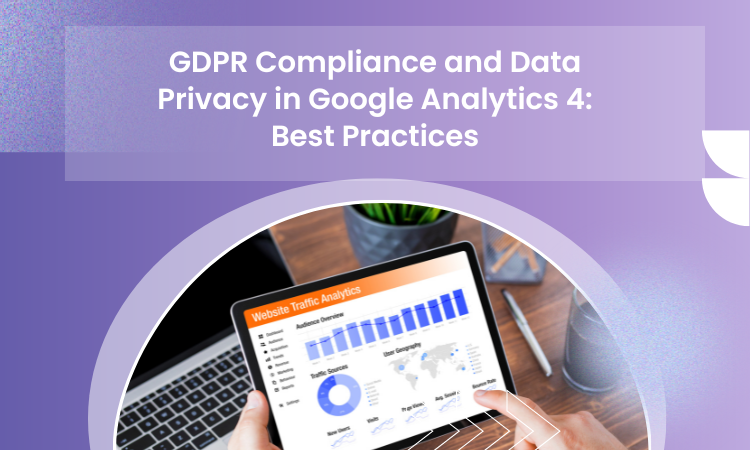In today’s digital landscape, data privacy has become an important concern for both businesses and consumers. Implemented by the European Union, the General Data Protection Regulation (GDPR) has set a new standard for data protection and privacy. As businesses leverage tools like Google Analytics 4 to gain insights into user behavior and enhance their online presence, ensuring compliance with GDPR is crucial. This blog will explore best practices for GDPR compliance and data privacy in Google Analytics 4.
Obtain User Consent
Under GDPR, businesses must obtain explicit user consent before collecting and processing personal data. When implementing Google Analytics 4, it is crucial to ensure that you have a valid legal basis for processing user data. Implement a cookie consent banner or pop-up that explicitly asks for user consent before any data is collected. Make sure the consent is freely given, specific, informed, and unambiguous.
Anonymize IP Addresses
To secure user privacy, it is recommended to anonymize IP addresses in Google Analytics 4. IP anonymization removes the last octet of the IP address, making it impossible to identify individuals directly. By enabling IP anonymization, you demonstrate your commitment to safeguarding user data and adhering to GDPR guidelines.
Enable Data Retention Controls
GDPR requires businesses to define data retention periods and ensure data is not stored longer than required. Google Analytics 4 amp provides options to manage data retention, allowing you to set specific timeframes for data deletion or archiving. Review your data retention settings regularly to ensure compliance and alignment with your organization’s data retention policies.
Implement Data Minimization
To comply with GDPR’s data minimization principles, collecting and processing only the data necessary for your business is essential. With amp Google Analytics 4, you can define which events and user properties you want to track. Restrict the accumulation of personally identifiable information (PII) and ensure you only capture data directly contributing to your analytics objectives.
Provide Opt-Out Mechanisms
Under GDPR, users can opt out of data collection or withdraw their consent. Include an easily accessible opt-out mechanism that allows users to exercise their rights. This can be in the form of a cookie management tool or a dedicated privacy settings page where users can manage their data preferences.
Create a Data Processing Agreement
If you are using Google Analytics 4, it is recommended to establish a data processing agreement (DPA) with Google. The DPA explicitly defines both parties’ roles and responsibilities regarding data protection. Google provides a pre-signed DPA you can review and accept through your Google Analytics account settings.
Educate Your Team
Data privacy and GDPR compliance should be a shared responsibility within your organization. Train your team members with access to Google Analytics 4 on the principles of data protection, user consent, and privacy best practices. Regularly communicate policy updates and changes to ensure everyone remains informed and compliant.
Conclusion
In an era where data privacy is paramount, businesses must prioritize GDPR compliance and data privacy using tools like Google Analytics 4. By implementing the best practices outlined above, you can demonstrate your commitment to protecting user data and ensuring compliance with regulations. Remember, data privacy is not just a legal requirement but also a way to build trust with your audience, which can ultimately contribute to the long-term success of your business.


